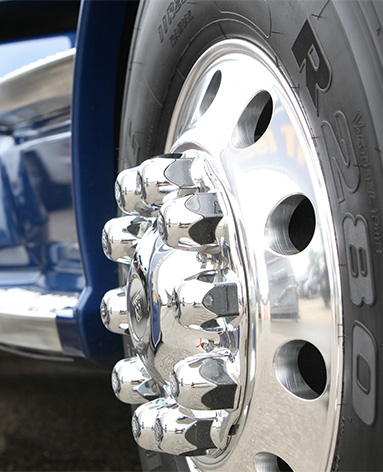Dec . 25, 2024 02:31 Back to list
adjusting brake drums
Adjusting Brake Drums A Comprehensive Guide
Brake systems are crucial for the safe operation of any vehicle. Among the various types of braking mechanisms, drum brakes are a common choice due to their effectiveness and durability. Understanding how to adjust brake drums is essential for maintaining optimal braking performance and ensuring safety on the road. This article will delve into the importance of brake drum adjustment, the process involved, and some tips for ensuring your drum brakes function correctly.
Importance of Brake Drum Adjustment
Brake drums work by exerting pressure on brake shoes, which in turn use friction to slow down the vehicle. Over time, brake shoes can wear down, and the drum itself can become misaligned, leading to decreased braking efficiency and potential safety hazards. Regularly adjusting brake drums helps to ensure that the brake shoes maintain the appropriate distance from the drum surface, maximizing contact and improving braking power. Failure to adjust brake drums can lead to uneven wear, increased stopping distances, and premature component failure.
Tools Required
Before starting the adjustment process, gather the necessary tools
. You will need1. A jack and jack stands 2. A lug wrench 3. A brake adjusting tool or flathead screwdriver 4. A tape measure or a brake shoe gauge for accuracy 5. Safety glasses and gloves for personal protection
Steps for Adjusting Brake Drums
1. Preparation Park the vehicle on a level surface and engage the parking brake. Begin by loosening the lug nuts on the wheel you will be working on. Then, use the jack to lift the vehicle and securely place it on jack stands.
adjusting brake drums

2. Removing the Wheel Once the vehicle is securely elevated, remove the lug nuts completely and take off the wheel to expose the drum brake assembly.
3. Inspecting Brake Components Before making any adjustments, visually inspect the brake shoes, drum, and other components for signs of wear or damage. Look for uneven wear on the brake shoes and ensure that the drum isn’t scored or cracked.
4. Adjusting the Brake Shoes Locate the adjuster mechanism, usually found at the bottom of the brake assembly. Using a brake adjusting tool or flathead screwdriver, turn the adjuster to either tighten or loosen the shoes. Rotate it in the appropriate direction until the shoes lightly contact the drum. A slight drag is acceptable, but it should not impede the wheel's rotation.
5. Check the Drum Clearance Once adjusted, spin the drum to ensure it moves freely. If it doesn't, recheck the adjuster and make further adjustments as needed.
6. Reassemble and Test After completing the adjustment, replace the wheel and hand-tighten the lug nuts. Lower the vehicle, then tighten the lug nuts to the manufacturer's specified torque. It’s important to do this in a star pattern for even distribution.
7. Testing the Brakes Start the vehicle and pump the brakes a few times to set the shoes against the drum properly. Take the car for a short test drive at low speed to verify that the brakes are functioning properly and that there are no unusual noises.
Final Thoughts
Adjusting brake drums is an essential maintenance task that every vehicle owner should be aware of. Regular checks and adjustments can enhance braking performance, prolong the life of your brake components, and, most importantly, keep you and your passengers safe on the road. Always prioritize safety and consider seeking professional assistance if you feel uncertain about performing these adjustments yourself. Regular maintenance can make all the difference in ensuring your vehicle stops safely and effectively.
-
ROR Web Development: Build Fast, Scalable, Secure Apps
NewsAug.17,2025
-
Scania Brake Drums: OEM Quality for Optimal Safety & Durability
NewsAug.16,2025
-
R.V.I: Advanced Remote Visual Inspection for Precision
NewsAug.15,2025
-
Discover HYUNDA: Innovative Vehicles, Equipment & Solutions
NewsAug.14,2025
-
R.V.I: Unlock Advanced Insights & Real-time Performance
NewsAug.13,2025
-
Kamaz Brake Drum: Durable & Reliable for Heavy Duty Trucks
NewsAug.12,2025
